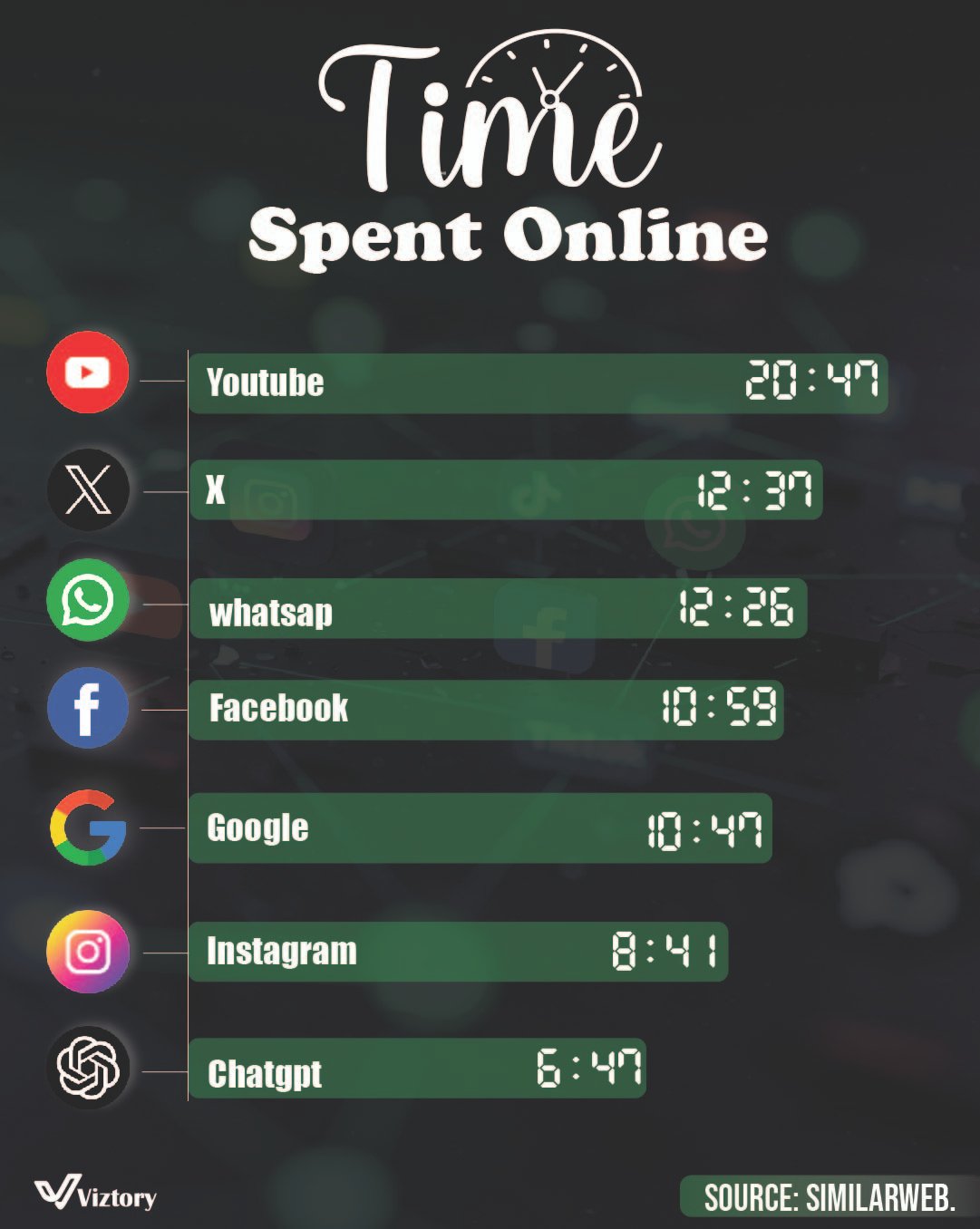Time Spent Online
-
Jun, Sat, 2025
Platform Engagement Highlights
YouTube leads the pack
At the top of the chart is YouTube, with users spending an average of 20 hours and 47 minutes on the platform. This reflects the dominance of video content in digital consumption. From educational material to entertainment and music, YouTube has become a go-to platform for diverse needs.
Social interaction remains strong
Following YouTube are messaging and social platforms — X (formerly Twitter) with 12:37, and WhatsApp with 12:26. These platforms enable real-time communication and quick access to news and conversations, driving sustained engagement. Facebook and Instagram also maintain significant user time at 10:59 and 8:41, respectively.
Search and information platforms
Google, once purely a search engine, now acts as a gateway to the web. With 10:47 of average usage, it demonstrates how essential information access is in users’ digital routines.
AI-powered productivity on the rise
Interestingly, ChatGPT makes the list with 6:47, indicating growing use of AI tools for writing, coding, learning, and problem-solving. Although it ranks lower in terms of time, the nature of interactions is typically more focused and task-oriented.
Digital Behavior Insights
Video content dominance
The high engagement on YouTube confirms that video remains the most effective medium for content delivery. This has implications for education, marketing, and even workplace training, all of which increasingly rely on video.
Shift toward multifunctional apps
WhatsApp and Instagram are not just communication tools; they support commerce, content creation, and media sharing. Their strong showing suggests that apps serving multiple purposes will continue to thrive.
Rise of intelligent tools
ChatGPT’s inclusion shows the shift toward intelligent assistance as part of daily life. AI tools are moving from novelty to necessity, especially among students, professionals, and creators.
Broader Technological Implications
The data captured in this chart is not just about hours—it reflects how deeply embedded technology has become in everyday life. Time spent online is increasingly fragmented across entertainment, communication, learning, and productivity tools. The rise of platforms like ChatGPT shows a pivot from passive consumption to active, purposeful digital interaction.
Moreover, the balance between entertainment (YouTube, Instagram) and utility (Google, ChatGPT) signals a more blended digital lifestyle. As these platforms evolve, the line between work and leisure continues to blur.
Conclusion
The chart titled “Time Spent Online” highlights more than just user habits—it paints a picture of a digitally dependent society navigating an ever-evolving tech landscape. Whether for entertainment, communication, or productivity, these platforms have become essential components of modern life. As technology continues to advance, the platforms that provide both value and versatility will define the next era of digital engagement.

